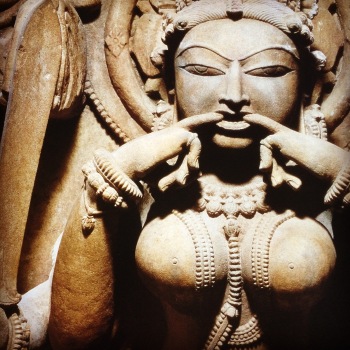I’ve been a meditator since around the age of 16. After decades of practice, and quite honestly, a lot of struggling, I have finally managed to come across a sweet spot in formal sitting practice that has accelerated my sense of “progress” (not that there is anywhere to go or anything to change, but that is a deeper topic for another day!)
So, what has suddenly helped me, and turned me from a semi-frequent meditator to someone that sits twice a day every day for about an hour? Here are a couple tips that work for me. Most of them are amazingly obvious, and I admit that I am just a slow study,
Sit comfortably
For years I would force myself into painful asanas in order to sit for meditation. I was convinced I had to sit on the floor in some way, either on my folded legs or in a half lotus (I gave up trying to twist into full lotus a long time ago). I would spend so much time in pain and discomfort that I would be unable to sit for long periods of time more often than not. My sitting practice was more of a twitching, tight breathing and stealing glances at the clock practice.
Now I sit in a chair. What a difference. Instead of struggling against muscle spasms and sprained back, I can focus. My friend and teacher Soror Meral told me to sit in a chair back when I was first starting out, but I discarded the advice of course because I had to sit in the Dragon asana like I saw in my copies of the Equinox.
Now that I am not battling against my body, I find that its a lot easier to settle in and move into the practice in a deep way.
Sit outside
This is another really basic one. For years my practice was indoors, inside a temple or shrine room. Thats fine and helped in many ways, but things really took off when I stepped outside into the world. The real temple has no walls.
I’ve found that being closer to nature, or just the sky outside, is far more effective for me than in a room. Something about feeling the breeze on my face, hearing the rustle of leaves and bird songs. I’ll often meditate with my eyes open, and seeing the wide open sky with its clouds, the trees and mountains, or the stars and moon at night — all of this goes a long way towards helping to stay centered and feeling the deep connection that we have with the world.
Again, this is a silly little trick in a lot of ways, as when your perspective shifts to one taste the location does not matter (really one should be in active presence in any situation). There is nothing wrong with using props to help you get jumpstarted, and nature is an amazing, beautiful, inspiring one.
Use an App
Despite working in high tech, I resisted using any apps for my practice for the longest time. Using technology that finds every possibly means to distract and interrupt attention seemed like the antithesis of any deep, mindful practice.
Then I tried out a free mindfullness app (Insight Timer), and discovered that these tools can in fact be really helpful. With guided meditations by many different teachers, and simple timers that can be configured to use custom timings and sounds, the app has actually become one of my most useful tools. Its simple to use, and rather than being another distraction, it helps to delineate the time. I also like seeing the charts that show how much time I have been meditating over the past weeks and months. An app can also help you to remain consistent, as you can set reminders which can be important depending on what your daily routines are like.
An app will not be for everyone, and there are still plenty of alternatives. The deeper lesson here is to not discard a potential aid simply based on things like “taste” or “tradition.” Use what works for you. Experiment, modify, discard and retain to find what is effective.
Take a Hike
Walking meditation has a long established history in many traditions. I am not suggesting a formal mindful walking practice here (although that is great as well). Just get out into nature as much as you can, out into the wilds if possible or even a park. Quiet, contemplative walks or hikes are great opportunities to feel at one with the universe.
There is a reason so many pagan and native traditions hold their practices outside in nature. Get out and try it. Like sitting outside for meditation, being active and moving your body, breathing fresh air, listening to the sounds of nature while being immersed in a forest, or making your way through a rocky path, along rivers — this is your world, and its best to experience it in its raw, natural beauty as much as possible.
Go alone or with a partner or group that has a similar intent to silently experience nature. Expand on this to go camping or backpacking in the majesty of the world.
I had some similar thoughts on this in relation to western esotericism in this article Reuniting yourself with the natural world

Reblogged this on Three Rivers.
Crowley probably got his ideas about asana sitting from Victorian willpower literature, similar to the origin of the popular “Five Tibetan Rites”.
You probably also know the Chinese saying, “go with the flow” 随缘.
Indeed. There is a certain youthful folly that is romantic to the extreme, but at some point it’s nice to actually move forward
Good post! Sitting comfortably is so important! Images of people meditating cross legged often put people off trying it at all.